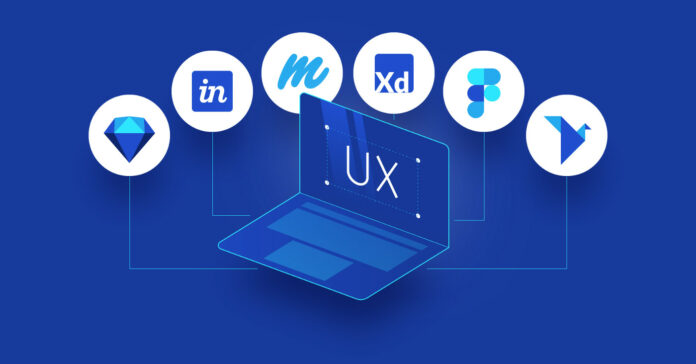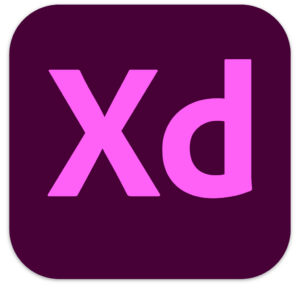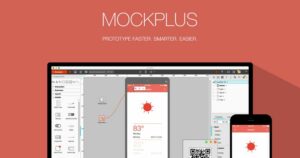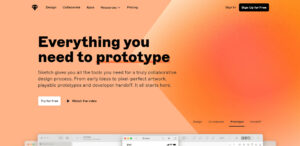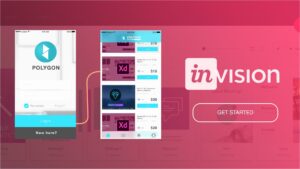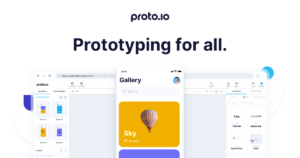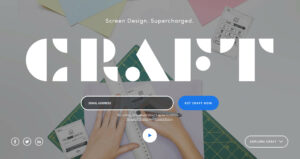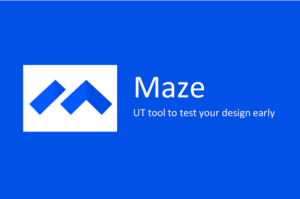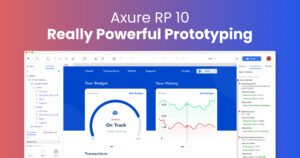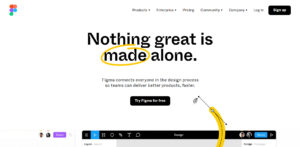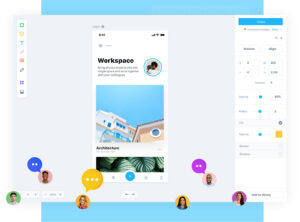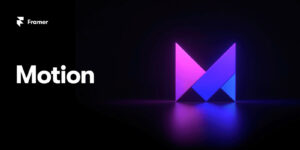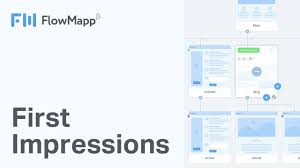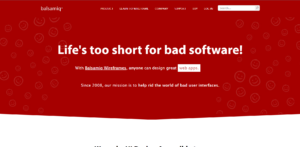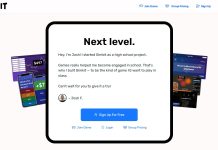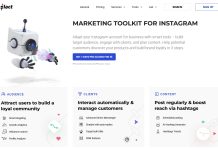Best Ux/UI Tools for designers will be described in this article. When it reaches to user research & design, UX tools perform a lot of the labor-intensive tasks. You may save time and money by using these tools to help you conceptualise, arrange, and express your points.
When choosing a tool, numerous factors need to be taken into account. Your decision will be influenced by the stage of development, the size of your company, and the type of digital product you are creating or overseeing.
Questions and Answers
Why Do Designers Need UX/UI Design Tools?
UX focuses on outlining the user experience to produce the ideal digital product, whereas UI works with developing the interface with aspects to make it digestible.
Nowadays, a lot of the software used as UI/UX design tools on the market is multifunctional. i.e., they carry out specific tasks for both processes.
If you’re a designer reading this, bear in mind that while though UI/UX tools serve a variety of purposes, mastering each of these processes requires a different set of abilities, which can take some time to develop. Your comfort and competence with these tools, as well as your pay, grow significantly after you have more than one talent under your belt. You can be sure that your services rendered invoice will reflect this. After that, all that remains is to choose the appropriate software tools.
How Do You Choose the Ideal UX/UI Design Tool?
Here are some things to take into account as you narrow down your options for the best UX tool.
For prototype
Look for attributes like a no-code user interface, simple export and sharing capabilities, animations, and support for responsive design.
To use wireframe
Choose tools that come with free extras like icons, process shortcuts, and basic controls.
In Mockups
Make sure the tool you chose has a wide range of built-in design recreation tools for creating mockups.
For Coordination
Designing is a collaborative process, thus the tool you select must enable commenting, labelling, and marking on projects.
Plugins
When a tool lacks particular functions that they require, plugins allow designers to get more done with it by outsourcing those services. Make sure your tool is compatible with plugins so you can use them to do functions that your chosen tool does not support.
Kits and Resources for UI
Because designers don’t have to design anything from start, resources and kits save a lot of time. The design process will go more quickly if the tool has UI Kits and resources like templates and themes.
Integrations
Through integrations, you can readily share data between platforms and streamline your workflow. To make the process effective, a UX solution should have interfaces with many platforms like CRM, Cloud, etc.
Best Prototyping Tools for UX/UI Designers – Related Reading
Testing and Research with Feedback
Prior to discussing the comparison list, it is vital to discuss research, a significant pre-step in UI and UX creation.
Your UI/UX design efforts could not have the desired effects if you don’t have the right client insights.
When you don’t know what customers want, how can you design an interface or user experience for a business or product?
Understanding customers’ preferences, online behaviour, problems they encounter with competitors’ products, and the type of UX they receive from them is essential for ensuring their satisfaction.
This is where a tool for gathering feedback on software, such as Qualaroo, comes to the rescue. Here’s how it aids in initiating the UX process:
Related Reading: Comparison Of The Best Customer Feedback Tools For 2022
Qualaroo
The best UX feedback tool is Qualaroo.
You need research to steer the project before wireframing and designing get started, and feedback software like Qualaroo helps with just that. It promotes user-centered UI and UX design studies.
For a better understanding of the essential UI and UX components your product requires, you can create surveys and distribute them via links or emails.
You can also use the tool to make surveys to test your prototypes, which facilitates team collaboration both within and between teams. To make the final product perfect, various teams and stakeholders can share their thoughts on the prototype.
Excellent for: research, feedback on design, and collaboration
Functions with browsers, Android, and iPhone apps
Features:
Provides pre-made survey template prototypes to help you get started right away.
Uses pop-ups to assist in conducting market research.
Enables social media sharing of surveys.
Segmentation of responses and advanced targeting.
Support for integration with a variety of tools, including Intercom, Zapier, HubSpot, and others.
Top 15 Best UX/UI Tools for Designers and Researchers In 2022
Top 15 Best UX/UI Tools for Designers and Researchers are explained here.
1. Adobe XD
Adobe XD best design tool
From a company that is arguably the leader in top UX tools for creatives, Adobe XDpromises to help you design, prototype, share and collaborate within their enterprise-grade app. With its slick asset management library, you can design a master element with customised properties to be used across your site or app. Also check Free Tools For Image Compression
Good for: Prototyping, Designing
Works on: Windows and macOS
Free version/trial is accessible: yes
Features:
Modify the master component and push it out across the business.
Features optimised vector tools, dynamic resizing of components across platforms, and layout grids for exact design. This is another UX/UI Tools.
It excels for designers in huge businesses and organisations with the necessity for asset uniformity.
Possesses an asset library that permits quick changes to visuals and styles, in addition to the Repeat Grid function that lets designers define a style. For instance, a list of contacts or a photo gallery that can be duplicated as many as required
UX designers who already use the Adobe Creative Cloud tools will benefit most from Adobe XD’s integrations with Photoshop and Illustrator.
2. Mockplus
An online UX design tool called Mockplus helps designers and developers collaborate effectively. It enables designers to quickly produce interactive prototypes of any fidelity, share them with their team, test them, and make iterations, which speeds up the entire product design process by at least 200%.
You can quickly depict everything in your head using the tool’s more than 3000 built-in design elements and templates. With its strong asset libraries, you can also quickly design UI layouts and patterns once and utilise them repeatedly across sites, prototypes, and even teams.
It is excellent for interteam cooperation. It enables developers to experience the code-free and pixel-perfect design process without turmoil in addition to enabling designers to coordinate the complete workflow.
Features:
Provides a drag-and-drop interface with no-code support to assist in presenting ideas.
Provides a huge selection of ready-made UI widgets and templates to help you get going right away.
Have the same project co-designed by your entire team at once, with all edits automatically synchronised.
Exports your prototype to any required image format or an HTML demo package.
You may prototype any project from numerous platforms with the use of plugins for Axure, Sketch, Adobe Photoshop, Figma, and Adobe XD.
With a single click, developers can view, copy, and download design specifications, assets, and code snippets.
Test and preview your web and app prototypes on actual hardware
3. Sketch
In order to design high-quality prototypes and interfaces with an immediate preview on mobile devices, Sketch has become a common UX tool. It has a Symbols feature that makes it easier to construct UI elements for reuse.
It is possible to create design systems and uphold consistency in interface design with the help of this capability. You can export the design as a working prototype as well. There is neither a free version nor a free trial available.
Features:
Users can generate mockups using this design and prototype tool and share them with a team for feedback. This is another UX/UI Tools.
To get a precise idea of the final product, add photographs and edit the text.
This tool can help UX designers at all levels, especially those who need to solicit feedback from various team members.
It’s really simple to get started using Sketch because of its big user base and variety of integrations.
4. InVision
InVision is a set of three UX/UI tools that offers users a centralised workspace for collaboration and quick screen design prototyping. All prototypes, sketches, and designs are accessible in one place thanks to InVision Cloud.
For rapid prototyping and validation, it is advised for UX designers at all levels and their collaborators throughout the product marketing organisation.
Features:
The Studio platform provides a simple method for fast producing responsive designs for any screen, as well as the ability to swiftly prototype a user experience with vector-based drawing capabilities.
Mimics user navigation with animated screen transitions.
Has a number of API interfaces that let you connect to tools and media libraries you are already using.
The InVision Design System Manager (DSM) functions as a content management library, giving businesses access to their most recent brand assets from a single location.
Helpful for the content marketing team’s organisation of approved assets.
For designers looking to advance, InVision offers helpful books, podcasts, and workshops on the DesignBetter.Co portal.
5. Proto.io
Proto.io has long been recognised as a capable piece of software and is unquestionably one of the few UI and UX design tools to enable you to create high-fidelity prototypes with such ease. It is a great UX design tool for beginners because it has a very low learning curve.
Features:
Comes with a drag-and-drop interface, eliminating the need for programming to generate high-fidelity prototypes.
Provides a built-in UI library that enables quick and efficient prototyping.
Supports complete interaction, including mouse events (such as single taps) and swipe events, as well as touch events (such as double-taps) and pinch events (such as pinching out). Also check tools for spying
Has an outstanding 60 frame per second complete animation feature.
You may test your prototype on Android and iOS by downloading the free app.
Makes it simple to collect feedback and collaborate on prototypes with others. This is another UX/UI Tools.
Provides exceptional versatility because it is simple to design for any device, including smartphones, watches, TVs, and devices with specific screen sizes.
You can publish your screenshots on your website or export them as PDF or HTML.
Features a sound effects library that you can use to add sounds to your animations and interactions.
Provides a Webview component that allows you to integrate an HTML page into your prototype.
6. Craft
The Craft plugin was developed by InVision to speed up your design process when using Photoshop and Sketch. The design process is revolutionised by this free UI/UX design tool since it pulls sample data and automates activities, updating your work at the same time.
Additionally, it encourages teamwork by notifying all participants of changes by updating them simultaneously.
Features:
Enables you to incorporate stock images from Getty and iStock to your layout.
Allows you to add data from other sources or utilise your own data in the layout.
Provides a better picture of the final design than other tools by accurately representing mockups.
Offers project collaboration, making it simple to get feedback.
All the displays are simply imported into InVision and synced to the desired prototype.
Simple to reproduce a copy in real-time or organise a layer.
Enables the addition of media to prototypes, such as text, JSON, and live content, thereby saving the time required to create mock data.
Has a Design System Manager (DSM) that controls the Sketch design library.
7. Maze
Maze is yet another outstanding user interface (UI) designing tool on our list. Rapid testing software makes it possible to conduct thorough tests both with and without prototypes.
This app design software is a fantastic resource for testing theories and mobile app designs. Various testing types are supported at every level of the development process.
Features:
Encourages the use of open-ended follow-up questions during usability testing to get detailed user input.
Allows for the computation of quantifiable indicators like page heatmaps, misclick rates, success rates, and A/B tests.
Provides several connectors with external tools like InVision, Marvel, Sketch, Adobe XD, and Figma.
8. Axure
The Axure RP UI design tool’s dynamic content, conditional logic, and adaptable views capabilities let you quickly create prototypes that function much like the real thing.
In order to share designs with stakeholders, you may also connect Axure to well-known design software like Sketch.
For project managers who don’t design or code, the tool is advised. They can quickly report problems on the platform to get everyone moving in the same direction.
Features:
You may instantly distribute prototypes within the organisation for immediate feedback using the built-in Axure Cloud capability.
Integrates with Microsoft Teams and Slack so that your company is always up to know on updates.
This is another UX/UI Tools. Makes the transition from designer to developer easier by integrating prototypes and documentation when publishing Axure RP files to Axure Cloud.
You can co-author, view revision history, and use team hosting on Axure Share after upgrading.
Enables UX designers who don’t frequently work with coding to transfer a project to the development team with full documentation.
9. Figma
Figma is one of the leading UI creation tools. It features a drag-and-drop user interface editor that enables cross-organizational collaboration. One of the few UX tools that unites designers, developers, and project managers is Figma.
Constraining graphical elements to a specific on-screen location, Boolean operations that allow you to precisely mix numerous shapes, and 60 fps interactive editing so you can see your design in clear previews are some of its most potent features for designers.
This solution enables UX designers in larger businesses to quickly scale the design process alongside developers and project managers. CTOs will value the variety of security choices available, including the ability to view activity logs.
Features:
It takes pride in being an organization’s single source of truth; you can upload approved reusable elements/icons, fonts, and styles.
Team members can check code as well as export visual assets and CSS from the design file using the developer process.
Possesses the capacity to perform SAML-based SSO integrations with the company’s identity provider.
Case studies with organisations like GitHub, Square, and Uber are available on Figma.
10. Marvel
Another excellent UI/UX tool is Marvel, which can be used to create a variety of hi-fi and lo-fi wireframes, prototypes, and HTML and CSS handoffs. It’s a fantastic tool for polishing the interface of the prototype and giving it a finished look. Also check Twitter tools
The learning bend for this app design software is quite tiniest. It makes the tool efficient at developing interfaces and creating prototypes. This is another UX/UI Tools.
Features:
Provides testing, handoff, and rapid prototyping.
Enables you to easily construct pages and even use a prototype to test your design.
Includes useful integrations for Sketch, Jira, Maze, Smartmockups, and more programmes. You may include your designs into the project workflow thanks to it.
Provides a variety of tools for each level of the design process.
Utilises swipe, pinch, and tap movements to assist in the creation of prototypes.
Gives you the option to import designs, add screen elements, and add many other features to your prototypes.
Developers may require HTML code and CSS styles to begin creating prototypes, and they are supported by the Handoff functionality.
11. Framer
This is another UX/UI Tools. One of the most sophisticated UX tools is Framer, which was formerly known as Framer X. It provides demonstrations of a future product’s functionality and performance that are as close to reality as possible. This is another UX/UI Tools.
Professional UI designers aiming to produce amazing prototypes should consider using Framer. It is user-friendly for beginners because there is little to no learning curve.
Features:
Provides collaborative early-stage creation leveraging input from JavaScript.
Supports the development of sophisticated and complex prototypes, including projects for augmented reality and virtual reality.
Aids in establishing minor yet important transitions.
Provides a variety of UI design tools for building fully operational prototypes and putting them through usability testing.
It is React-compatible, enabling it to function nicely with cutting-edge web design advances.
Comes with a variety of plugins and UI kits that make it easier to incorporate rich media and other features into social networking networks like Twitter, Facebook, and LinkedIn.
12. Webflow
This is another UX/UI Tools. You can design with Webflow even if you don’t understand HTML or CSS. With this simple tool, you can design user interfaces that are both visually appealing and impressive. It provides a fully visual canvas so users can create experiences that are ready for production without knowing any code. A quick, dependable, and hassle-free hosting network is included with the scalable UI design tool known as Webflow. This is another UX/UI Tools.
Features:
Provides a drag-and-drop editor to build user interfaces that are clear and efficient.
While the implementation of micro-interactions, generates CSS, HTML, or Javascript code, saving a lot of time.
Provides a variety of UI templates to help you get started immediately.
Enables SEO (Search Engine Optimization), interaction with social networking sites, and content marketing tools through CMS software support.
13. FlowMapp
FlowMapp is another specialised UX tool that made it onto our list. The tool works best for IAs, sitemaps, user flows, and wireframing for websites. Using FlowMapp, several teams may see the workflows quickly. Additionally, it offers functionality similar to Trello for status monitoring while allowing you to iterate on a conventional tree-diagram type sitemap.
Features:
Is a straightforward sitemap tool that facilitates teamwork and website page construction.
Personas are created with the help of the Personas feature.
Provides collaboration, content planning, and communication tools for a variety of projects, including websites, apps, and digital products.
14. Balsamiq
Balsamiq is among the greatest UI design software and a popular wireframing tool among designers, product managers, and innovators. In order to allow users and testers to concentrate on the usability and flow of the interface, Balsamiq was specifically created to make low-fidelity wireframes. This is another UX/UI Tools.
Despite its simplicity, this tool is advised for UX designers of all levels to quickly demonstrate the usability of a proposed website or application. Any product manager or business owner trying to put an idea on paper will find Balsamiq to be helpful. Anyone who doesn’t know how to code can use this design programme because it has a straightforward learning curve.
Features:
Helps design low-tech wireframes that put the emphasis on utility and user flow.
A drag and drop editor is available to make designing quick and easy.
Provides designers with a selection of tools and reusable icons from which to create eye-catching mockups in real-time.
Enables you to incorporate linking into interactive prototypes for use in usability testing or demos.
Enables you to use interactive PDFs and photos to present wireframes on the web.
15. UXPin
The ability to create elements with interactivity is what distinguishes UXPin. Other design tools merely let you fake interactions by linking whatever you draw, according to their website. Our interactive states, logic, and code elements are what they lack. This is another UX/UI Tools.
Any UX designer might benefit from using UXPin, but those who prioritise accessibility should give it serious consideration.
Features:
In order to promote mobile-first designs, stakeholders can utilise the UXPin Mirror functionality to quickly see mockups on an iPhone or Android smartphone by just scanning a QR code.
Provides numerous capabilities that designers may utilise to build mockups, such as interactive form components, element libraries (iOS, Material, and Bootstrap), and vector drawing tools.
Provides a simple means for designers to check whether their creations adhere to WCAG contrast guidelines. With this novel approach, a designer may examine how a person with any one of eight different types of colour blindness will perceive their creations.
Enables drag-and-drop editing, which makes it simple to utilise when creating hi-fi prototypes.
Enables easy design import by integrating nicely with other tools like Slack, Jira, Storybook, etc. In this manner, when adding functionalities, layers are not disturbed or reduced to a static image.
Questions and Answers
UX research tools: what are they?
Utilizing user experience research tools, organisations may learn more about their target market’s online behaviours, wants, and pain areas in order to better understand how to design a smooth user experience for their product.
What equipment do UX designers employ?
The development process involves the usage of tools with a variety of features by UX designers. For activities like prototyping, wireframing, UX research, design, and others, they need the appropriate tools.
How does a UX designer compile information?
Various techniques, including performing online surveys, interviews, card sorting, usability tests, tree tests, and observation are used by UX designers to collect data.
